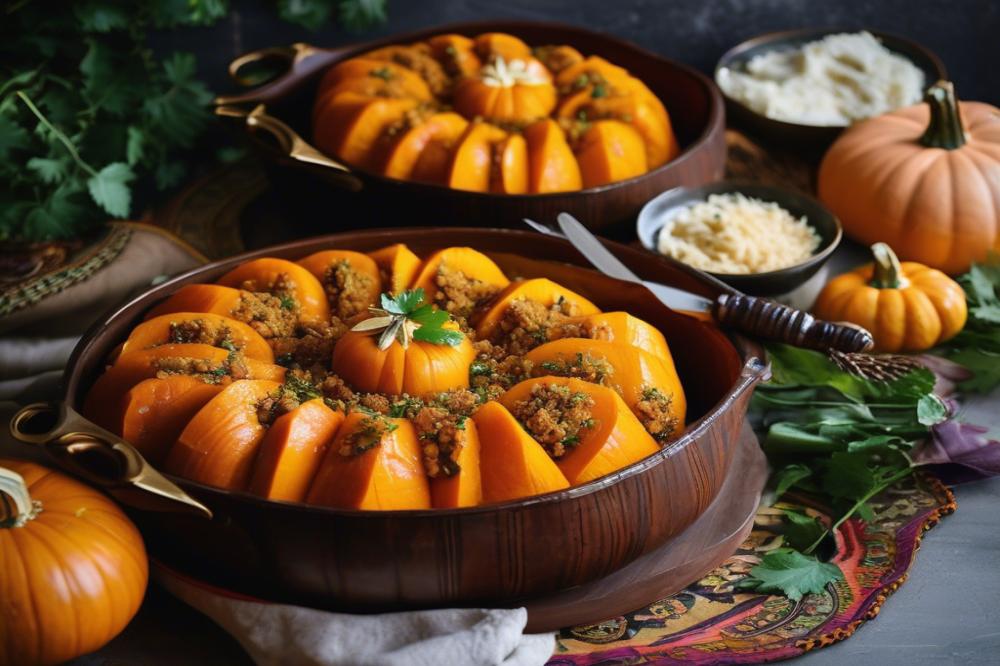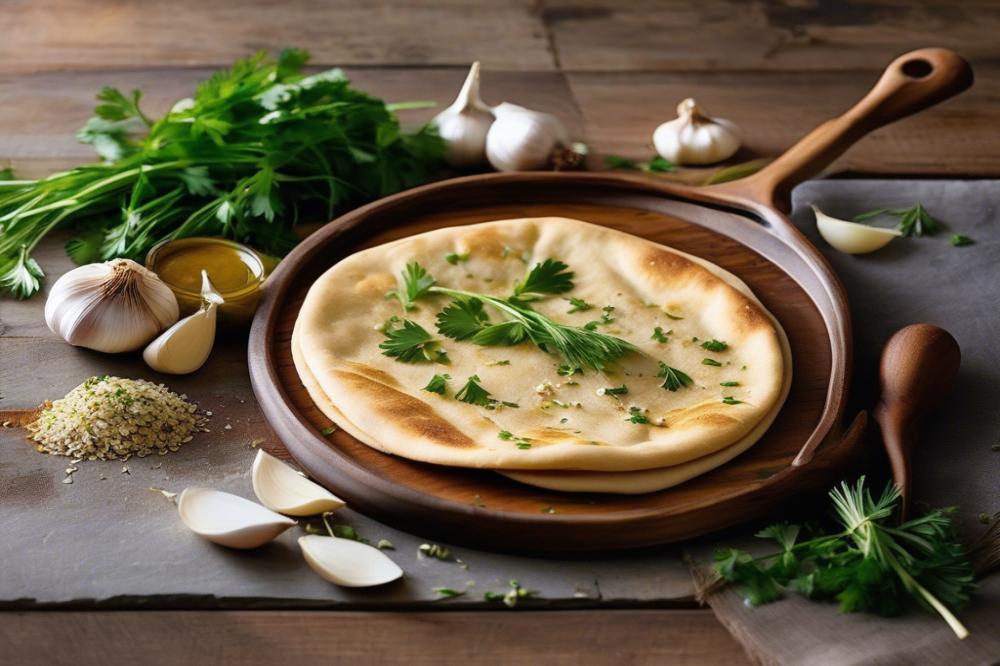Introduction
Lebanese cuisine is a vibrant tapestry woven from history, culture, and tradition. It showcases a variety of flavors, colors, and ingredients that reflect the Mediterranean’s bounty. Many dishes stand out for their freshness and depth. Among these, stuffed vegetables hold a special place. They symbolize hospitality and the joy of sharing meals with family and friends.
Cooking stuffed vegetables is common in Lebanese households. They offer a delightful combination of flavors and textures. Both nutritious and satisfying, these meals often feature rice, meat, and spices. Among all the variations, Koosa Mahshi is particularly beloved. Koosa refers to zucchini, which is the star of this dish. It is hollowed out and filled with a savory mixture of rice and meat, then simmered in a flavorful sauce.
Pumpkin recipes also play a role in Lebanese cooking, adding a touch of sweetness. These dishes often blend ingredients that make each bite a tasty experience. Vegetarians will appreciate how easy it is to adapt stuffed vegetable recipes. By simply omitting meat, one can create healthy recipes without losing any flavor.
Many enjoy preparing Koosa Mahshi at family gatherings and celebrations. Its popularity transcends generations, making it a must-try for anyone exploring Mediterranean food. Cooking tips abound for those new to this dish. It can be as simple or complex as one desires. By embarking on this culinary journey, you will not only learn a delicious recipe but also embrace a piece of Lebanese culture.
Lebanese Stuffed Pumpkin: Ingredients and Cooking Instructions
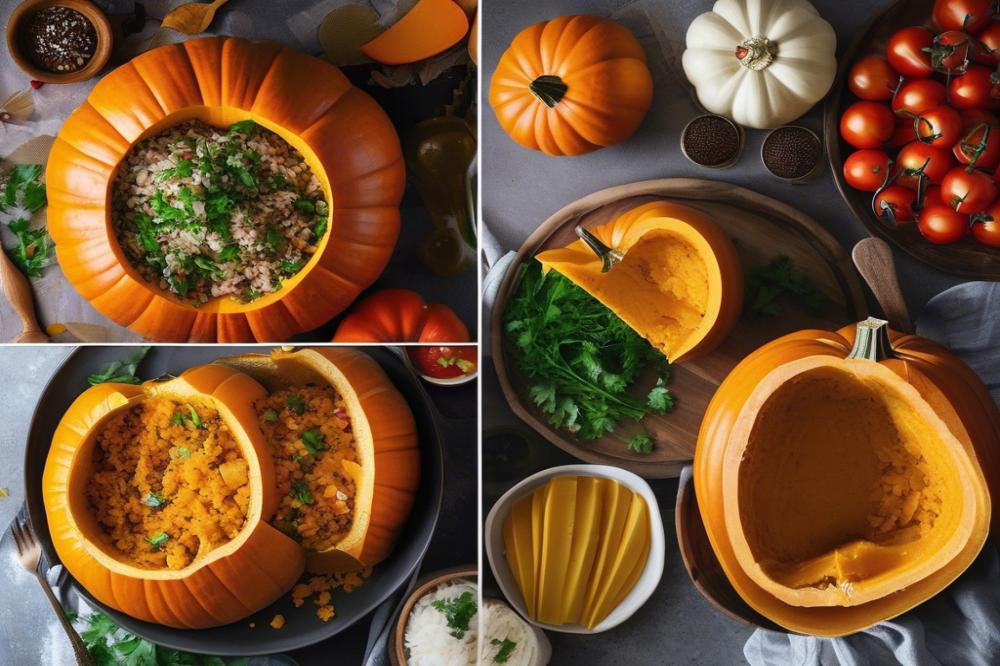
Ingredients
To make stuffed pumpkin, you will need the following ingredients:
- Pumpkin: 2 medium-sized
- Rice: 1 cup, rinsed
- Ground meat (lamb or beef): 1 cup (optional for vegetarian version)
- Onion: 1 medium, finely chopped
- Tomato: 1 large, diced
- Parsley: 1/4 cup, chopped
- Mediterranean spices (cinnamon, allspice): 1 tsp each
- Salt and pepper: to taste
- Olive oil: 2 tbsp
- Vegetable broth or water: 3 cups
Cooking Instructions
Gather all the ingredients before you start. First, prepare the pumpkins. Cut the tops off and scoop out the seeds and strings inside. Make sure to leave enough flesh for a good texture in your dish. This task can be done with a sturdy spoon or a small knife.
Next, focus on the filling. In a frying pan, heat olive oil over medium heat. Add the chopped onions and sauté them until they become translucent. Following that, mix in the ground meat if using. Cook it until it’s no longer pink. After that, incorporate the diced tomato, rinsed rice, parsley, and spices. Stir everything together properly, allowing the flavors to meld together. Don’t forget to add salt and pepper to taste.
Now it’s time to stuff the pumpkins. Use a spoon or your hands to fill each pumpkin with the rice and meat mixture. Be careful not to overfill them, as the rice will expand when it cooks. Place the stuffed pumpkins upright in a large pot.
Pour the vegetable broth or water around the pumpkins, ensuring they are partially submerged. Cover the pot and bring it to a gentle boil. After that, reduce the heat and let it simmer. Allow the pumpkins to cook for about 30 to 40 minutes. You can check them occasionally to ensure they are tender but not falling apart.
When serving, consider garnishing with additional chopped parsley or a dollop of yogurt. These touches can enhance the flavor and presentation. Enjoy this dish as a main component of a meal or alongside other traditional dishes from Lebanese cuisine. It pairs well with various Mediterranean foods.
Koosa Mahshi is one of those easy recipes that bring comfort and nourishment. It stands out as a healthy recipe among other stuffed vegetables, while also providing a delightful experience for both vegetarians and meat lovers.
Nutritional Information
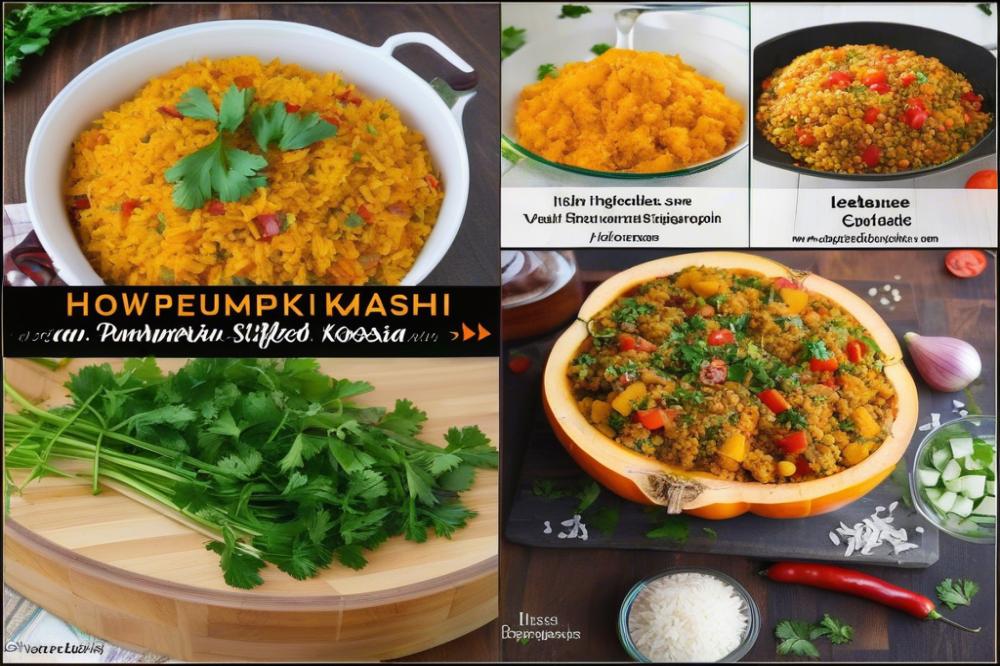
Understanding the nutritional value of each ingredient in stuffed vegetables like koosa mahshi is essential. This dish features a variety of healthful components. Each element contributes to the overall nutritional profile. For example, pumpkin is low in calories yet high in fiber, making it an excellent choice for meals.
Let’s break down the key ingredients. A medium pumpkin can contain about 50 calories. This is relatively low compared to other starchy vegetables. Protein content may reach around 2 grams per serving. Ground meat and rice add additional protein but can change calorie counts significantly. Healthy fats found in olive oil enhance flavor while adding nutrition.
Carbohydrates play a vital role in energy. For instance, rice provides about 45 grams of carbs per cup. High fiber content promotes digestion and can help maintain a healthy gut. Fresh herbs, often used in Lebanese cuisine, offer vitamins and antioxidants.
Focusing on fresh ingredients in vegetarian dishes delivers numerous health advantages. Fresh vegetables retain their nutrients better than processed ones. Nutrients inside these foods contribute to overall well-being. Using seasonal produce can enhance flavor and reduce costs. Local markets often offer the freshest selections of pumpkin and herbs.
Moreover, Mediterranean food is known for its health benefits. This food culture emphasizes lean meats, grains, and plenty of fruits and vegetables. Dishes like Lebanese Stuffed Pumpkin provide a balance of nutrition. Fiber-rich meals can help reduce cholesterol levels and improve heart health.
Vegetarian dishes can be just as satisfying as meat-based options. They often include a mix of flavors and textures. Cooking tips play a significant role in enhancing a recipe. Mixing spices and herbs allows for customization and creativity in cooking. Easy recipes can be crafted without sacrificing taste or health.
Ultimately, enjoying traditional dishes while keeping them healthy is possible. With each bite of koosa, one can appreciate the blend of nutrition and flavor. Adopting these practices leads to a more balanced diet. Staying aware of how ingredients impact health makes each meal worthwhile.
Exploring Lebanese Cuisine and Its Signature Dishes
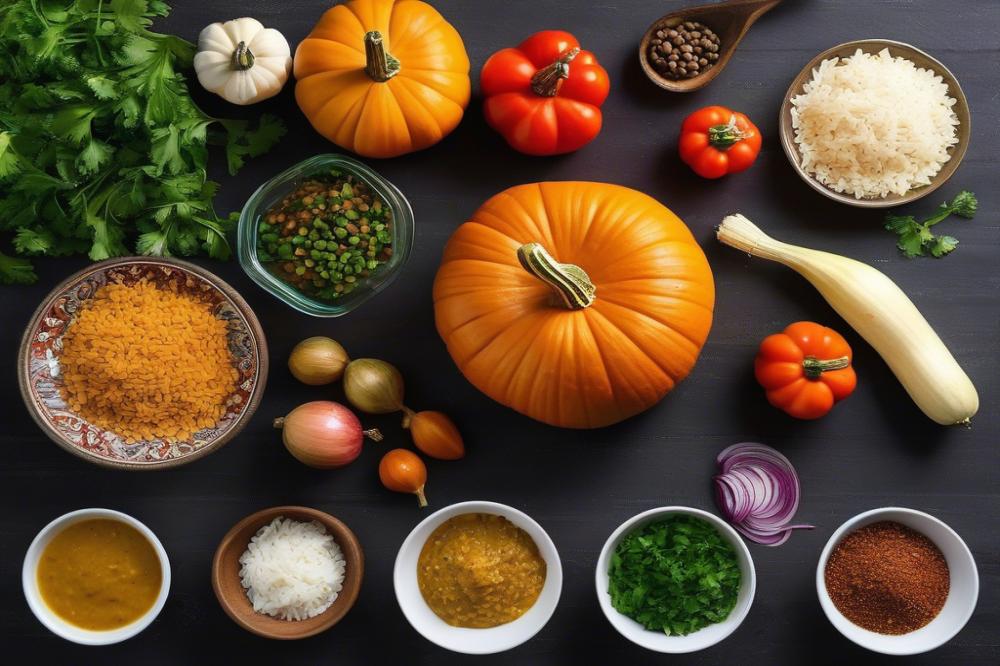
Lebanese cuisine is known for its vibrant flavors, fresh ingredients, and rich history. An important aspect of this culinary tradition is the use of vegetables. Various kinds of vegetables are often central to meals, showcasing their versatility and nutritional value. Recipes featuring these ingredients highlight the love for healthy recipes in Mediterranean food.
Among the many dishes, one particularly popular preparation involves stuffed vegetables. Koosa, or zucchini, holds a special place in many hearts. However, Lebanese love to stuff other vegetables too. Bell peppers and eggplants are common choices. These stuffed creations, filled with rice, herbs, and sometimes meat, offer a delightful mixture of tastes and textures. The act of stuffing vegetables can elevate simple ingredients into something amazing.
Stuffed dishes play a significant role in family gatherings and celebrations. They are often the star of the show during festive occasions. Preparing these meals can involve the whole family. Children help with washing and chopping, while parents share cooking tips that have been passed down through generations. This sense of togetherness makes meals more special. Each family may have their unique twist on traditional dishes. Cultures blend through these recipes, allowing everyone to contribute a piece of their heritage to the table.
In Lebanon, sharing a meal is more than just satisfying hunger. It’s about connection and love. Gathering around the table to enjoy a hearty serving of stuffed vegetables fosters relationships. As you savor the complex flavors, remember the stories shared and memories created around these dishes. Exploring pumpkin recipes and other stuffed vegetables makes learning about Lebanese cuisine enjoyable and rewarding.
Cooking Tips for Perfect Koosa Mahshi
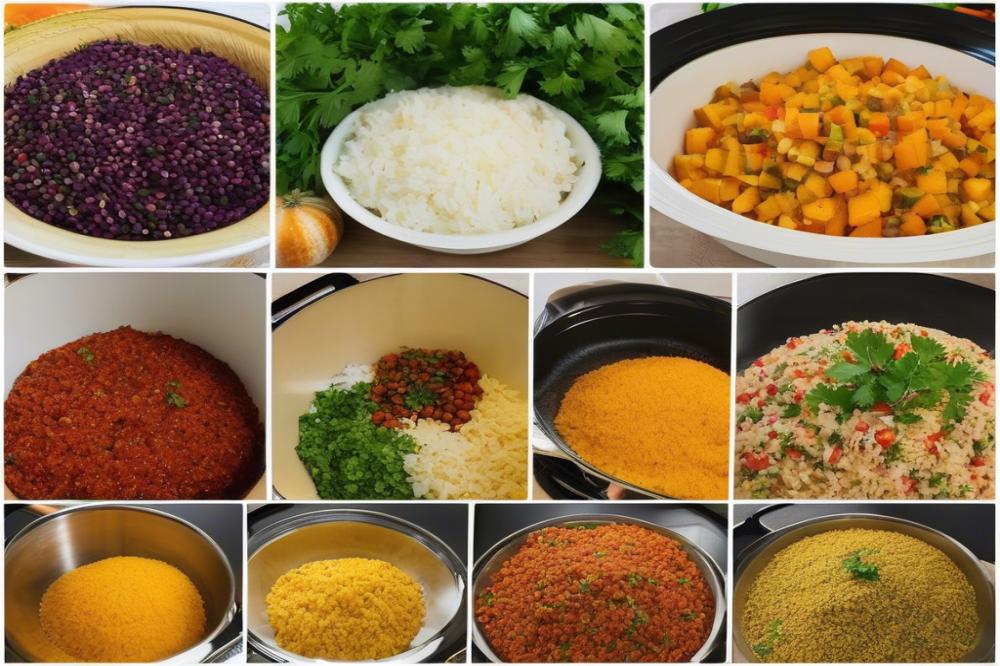
Selecting the right pumpkin is key. Look for small to medium-sized pumpkins that are firm and have a smooth skin. Varieties such as sugar pie pumpkin or even yellow squash can work nicely. Choose those that feel heavy for their size, indicating they are fresh. Avoid any with blemishes or soft spots. Preparing them correctly is just as important. Slice off the top carefully and scoop out the seeds. Keep the walls of the pumpkin thick enough to hold the stuffing but thin enough to cook through nicely.
Achieving the right flavor balance in your filling makes all the difference. A mixture of rice, ground meat, and seasonal herbs creates a delightful taste. Consider adding spices like cinnamon or allspice to give a warm touch. Fresh parsley or mint can add brightness. Don’t forget to season the mixture with salt and pepper. Tasting the filling before stuffing can help you adjust flavors as needed. This is essential for traditional dishes in Lebanese cuisine where harmony in flavors is celebrated.
Timing and temperature are vital for a delicious final dish. Preheat your oven to 350°F (175°C). Cover the stuffed pumpkins with aluminum foil to lock in moisture. Cooking time will vary but generally, they need about 45 minutes to an hour. Check for doneness by seeing if the pumpkin is tender when pierced with a fork. If you prefer a slightly caramelized top, remove the foil and let them bake for an additional 10-15 minutes. Following these cooking tips will help guarantee your stuffed vegetables turn out perfectly every time.
Final Thoughts on a Delicious Culinary Adventure
Lebanese stuffed pumpkin is a remarkable dish that combines healthy ingredients with rich flavors. This recipe showcases how vegetables can take center stage in a meal. With a blend of spices, herbs, and delicious stuffing, it is easy to see why this dish is beloved. Those seeking a nutritious option will find that it fits many dietary needs well.
Exploring Lebanese cuisine can open doors to a world of delightful dishes. Beyond stuffed vegetables, there are numerous recipes to try, each contributing to a colorful culinary tapestry. Dishes like tabbouleh, fattoush, and kibbeh offer unique tastes that highlight the Mediterranean lifestyle. The freshness of ingredients and the emphasis on herbs create satisfying meals that are light yet filling.
This dish’s versatility stands out in countless ways. Whether someone is vegetarian or follows a different diet, the stuffing can be adjusted with ease. For meat lovers, a meat-based filling offers a satisfying option. Meanwhile, those leaning towards plant-based choices can enjoy hearty grains and legumes. This adaptability invites everyone to the table.
Trying to make koosa mahshi at home can lead to a fun and rewarding experience. The process allows for creativity, as each cook can add their personal touch. Everyone can experiment with flavors and ingredients to suit their taste. So why not gather a few friends or family members and embark on this culinary journey together?
In closing, this dish embodies the spirit of sharing and enjoying food with loved ones. Each bite reveals the heart of Lebanese cooking, full of history and tradition. Trying out this recipe can be the perfect way to enhance your cooking repertoire. Enjoy the process, savor the flavors, and share the joy that comes with a delicious meal.

